A Riot of Colors
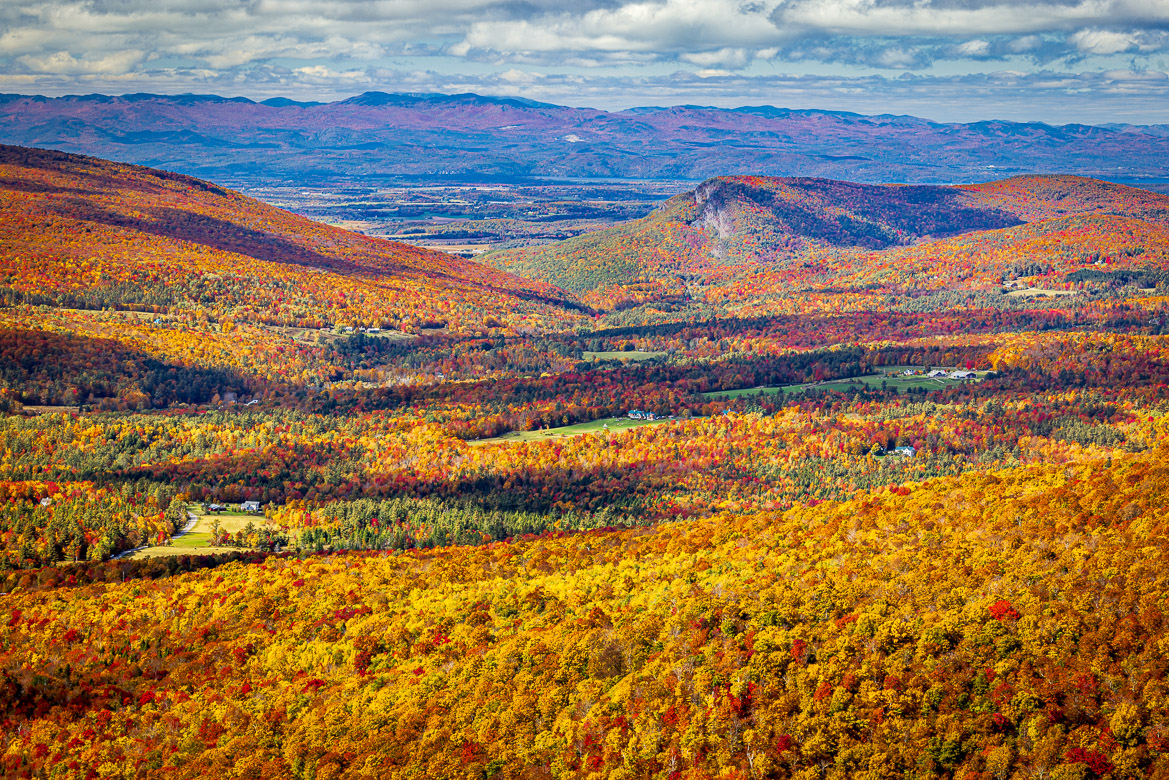
In beginning October Jennifer and I left England for two weeks of “leaf peeping” as the autumn colours should have turned yellow and orange and red. We experienced all that the rural New England had to offer: Friendly hospitality, white painted churches and equally white painted fences protecting green meadows surrounded by glowing maple trees, lakes and streams, rivers and rapids and waterfall in valleys dressed in yellows, oranges and reds and among all those leaves sometimes a forlorn green leaf, who seemed to have forgotten what season it was. And of course the ubiquitous covered bridges that are so much New England.
Whereas Jennifer had been very active with the camera during our wildlife photography in Kenya and Tanzania, now I was the camera man and Jennifer the director, finding new angles and spots to capture and showing me on her iPhone. We focused on northern Vermont and New Hampshire, the White and the Green Mountains and surrounding areas. I have been photographing New England before, but never succeeded to get there in just the right time and seen such spectacular colours.
My American friends must forgive me. They may see this every year, and for them my pictures may appear very ordinary, but the choice of photos reflects my own fascination with something I hadn’t seen to this extent before. The closest I have come to this were the autumn colours we saw in Japan in 2019, but the landscapes are very different (and the food!).
I haven’t followed any geographical storyline but have put together a few different posts. The first, here, focuses on the autumn colours and in some following posts I will show churches, covered bridges and rivers and waterfalls.
Rural Roads
We travelled a lot during our weeks in New England reminding us of the vastness of America. A lot of it was on gravelled roads far from any larger towns. The first image below is the road going up to Lincoln Gap, the highest point on the road going west from Warren in Northern Vermont, where we stayed three nights at our favourite inn in New England, Pitcher Inn.
And below there, beside the photo of Jennifer, is an alley of maple trees captured just before sunset. And further down is another little road with the typical white painted fences that are so attractive.
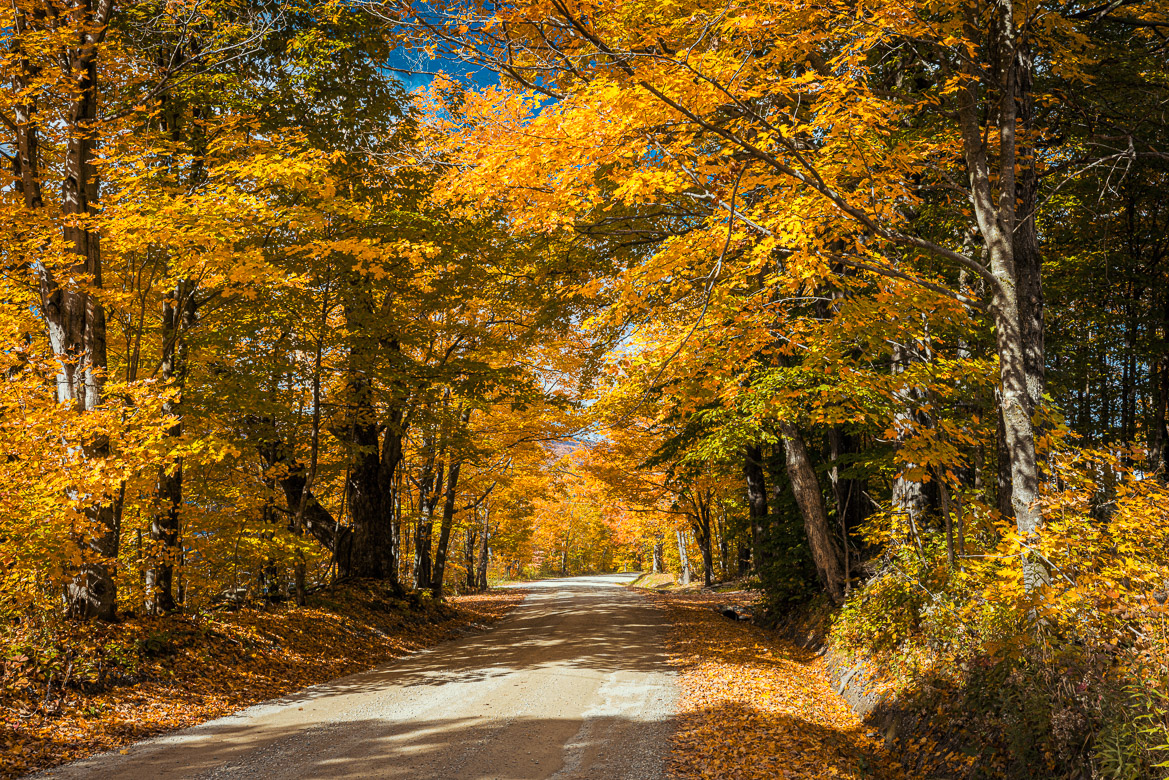
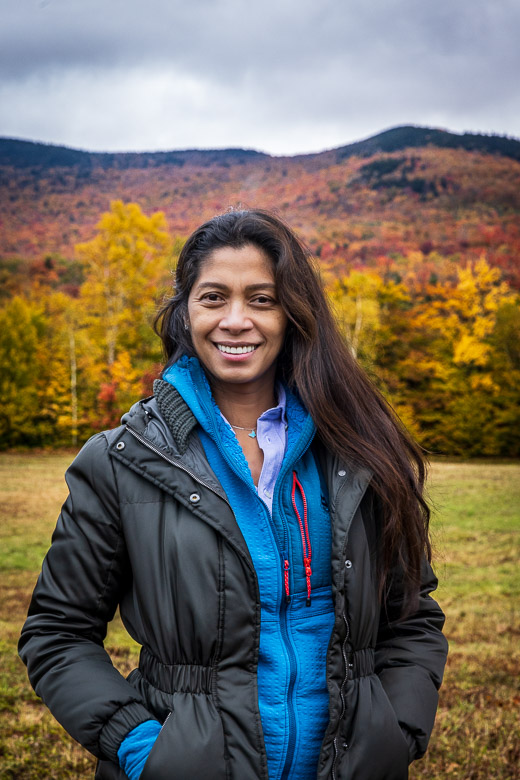
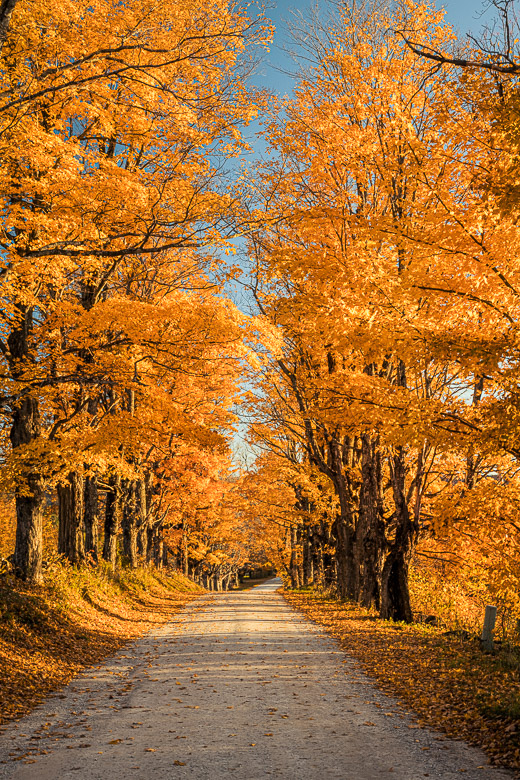
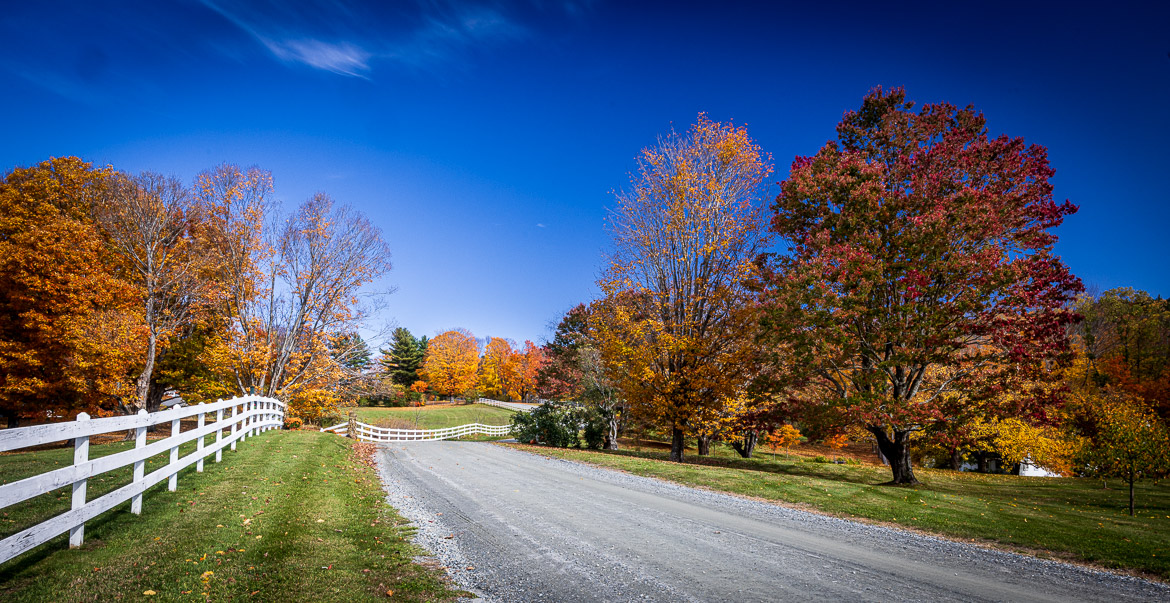
Mist and low lying clouds
One morning, when we left Warren driving east we turned back and noticed the dramatic clouds above us and the mist lingering among the hills and trees below (see the two images below). And at many occasions you had mist or low clouds drifting by, especially in the mornings. See images further down.
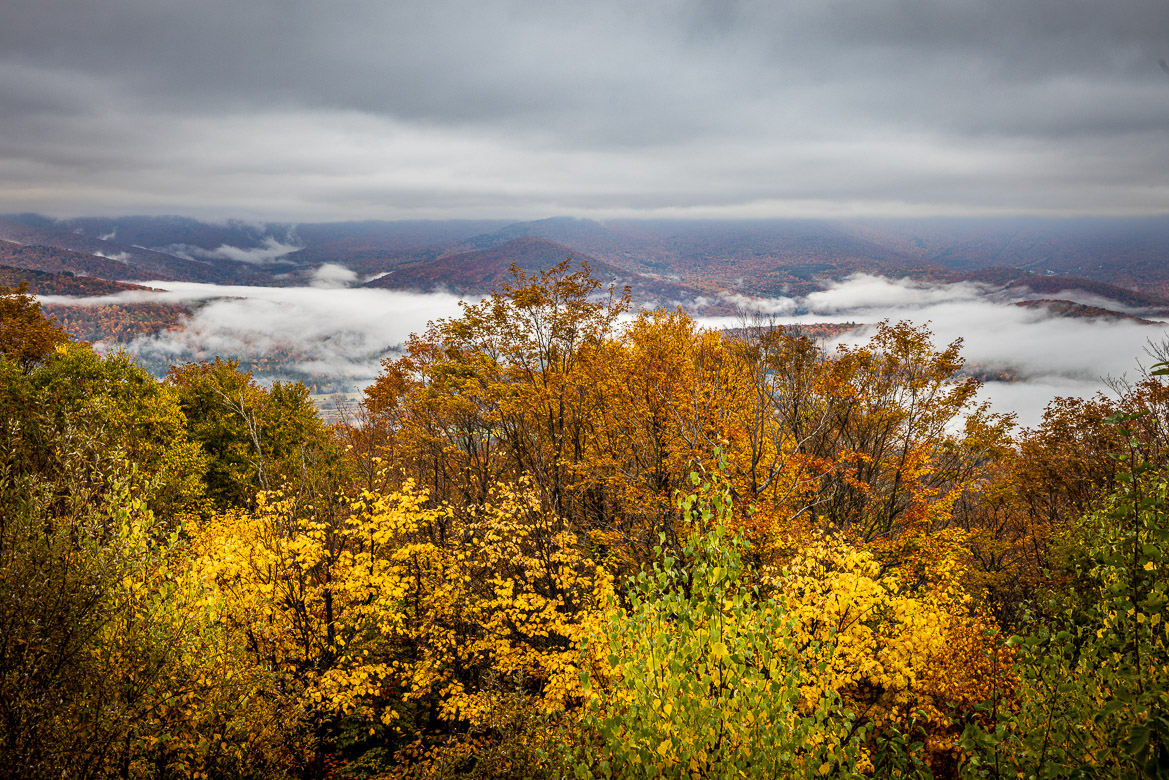
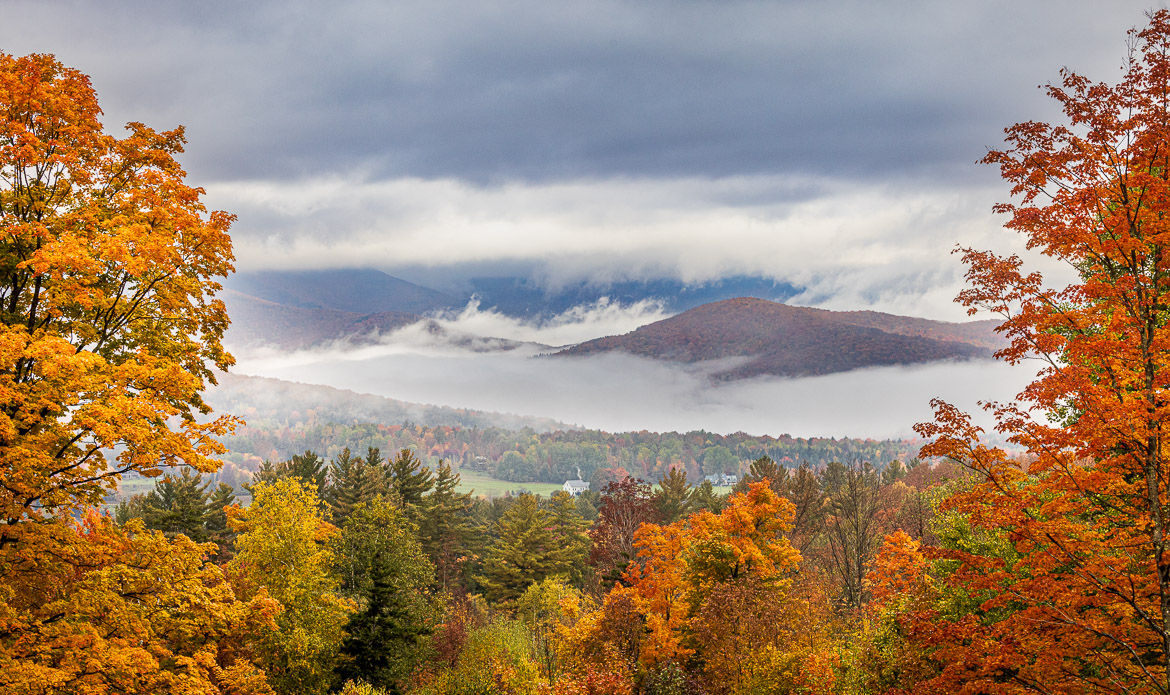
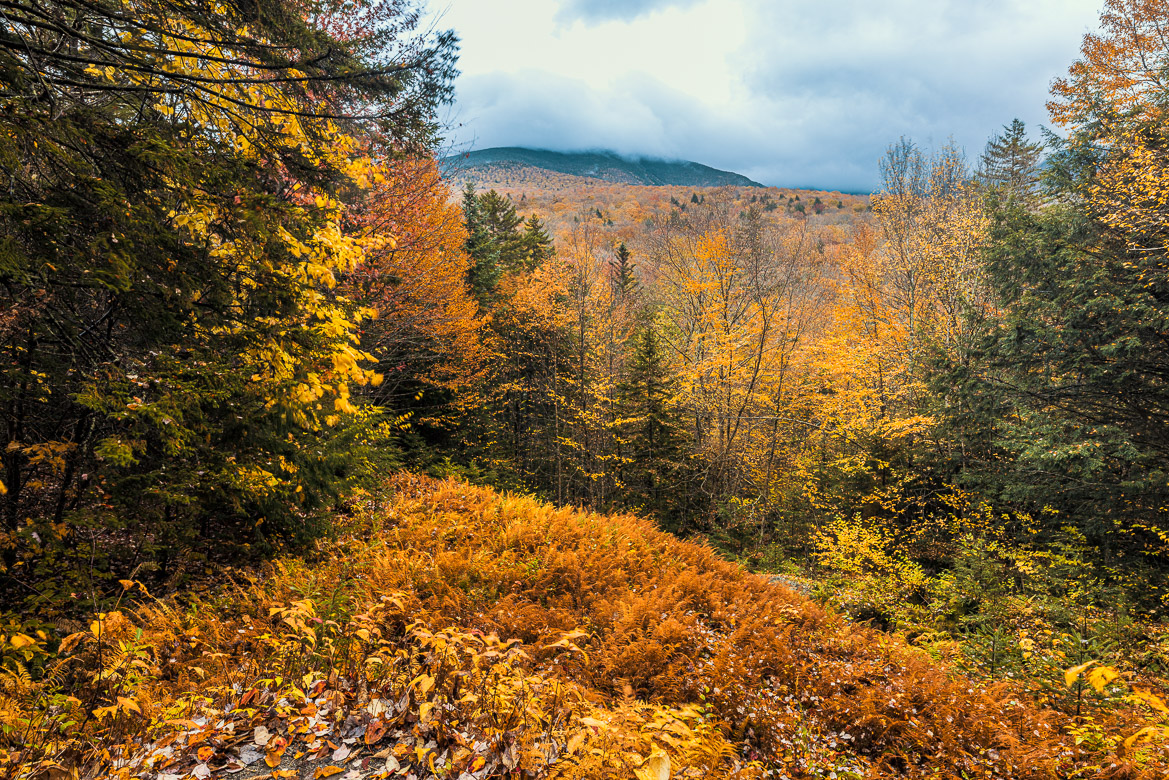
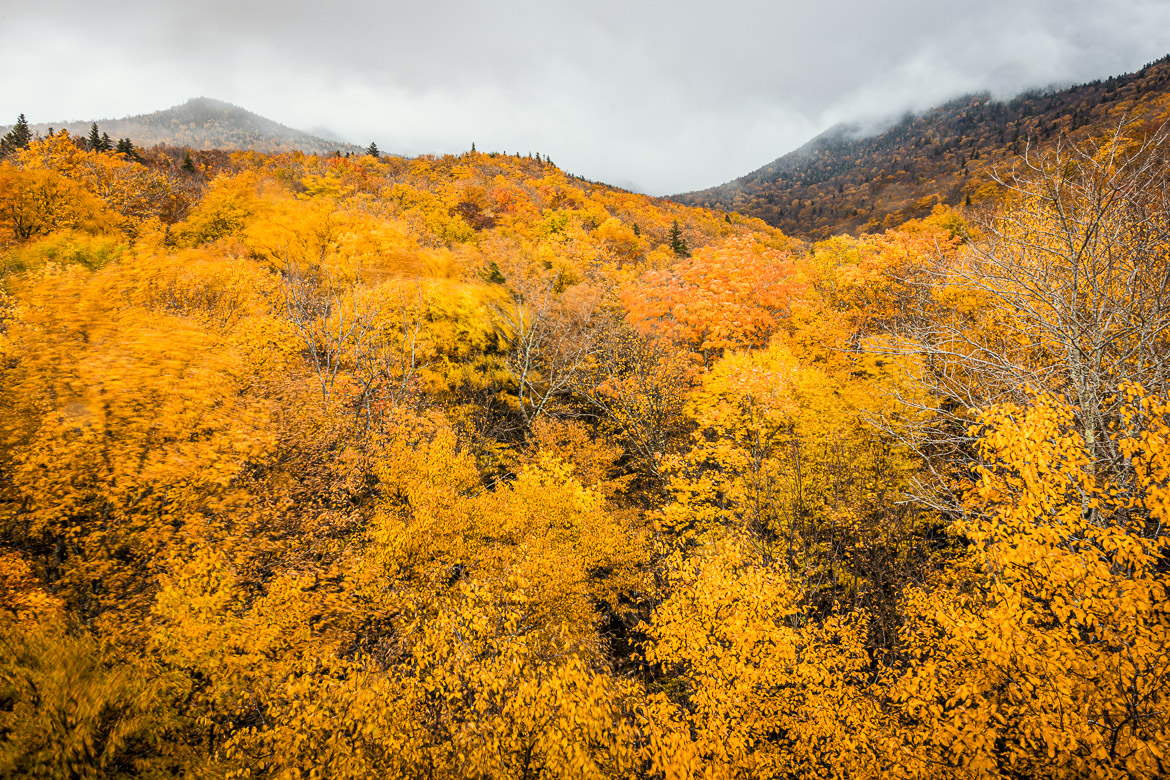
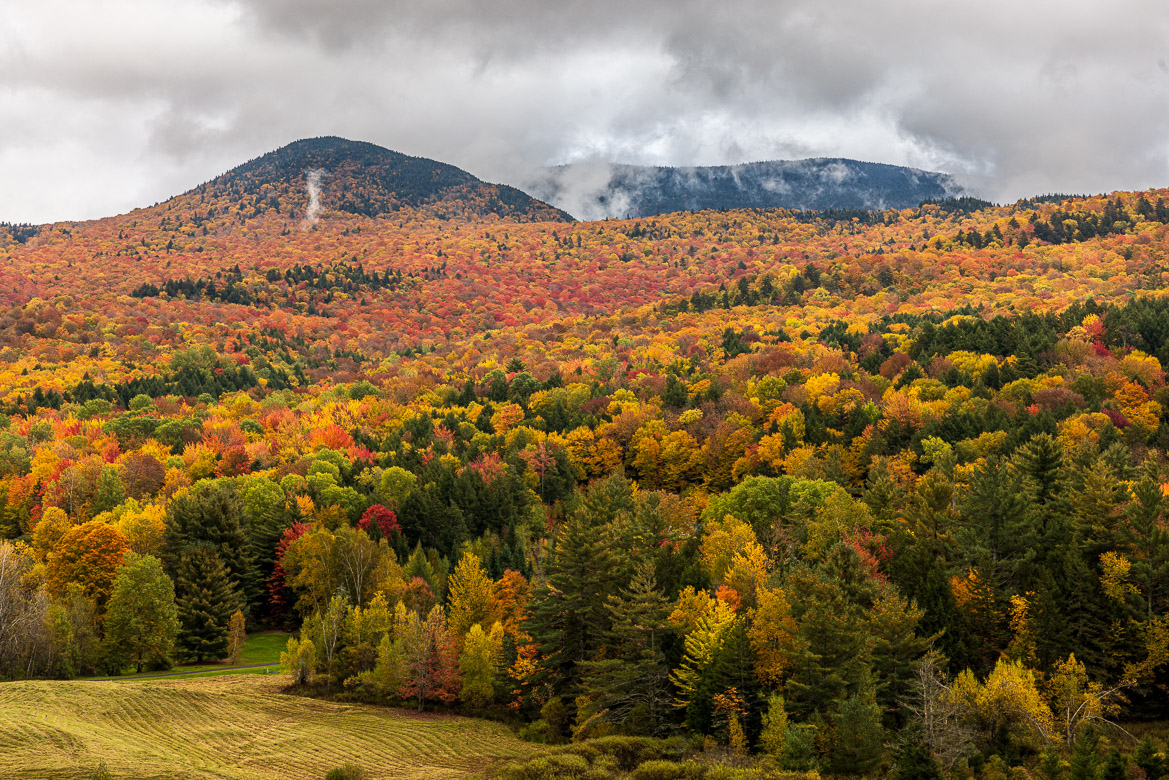
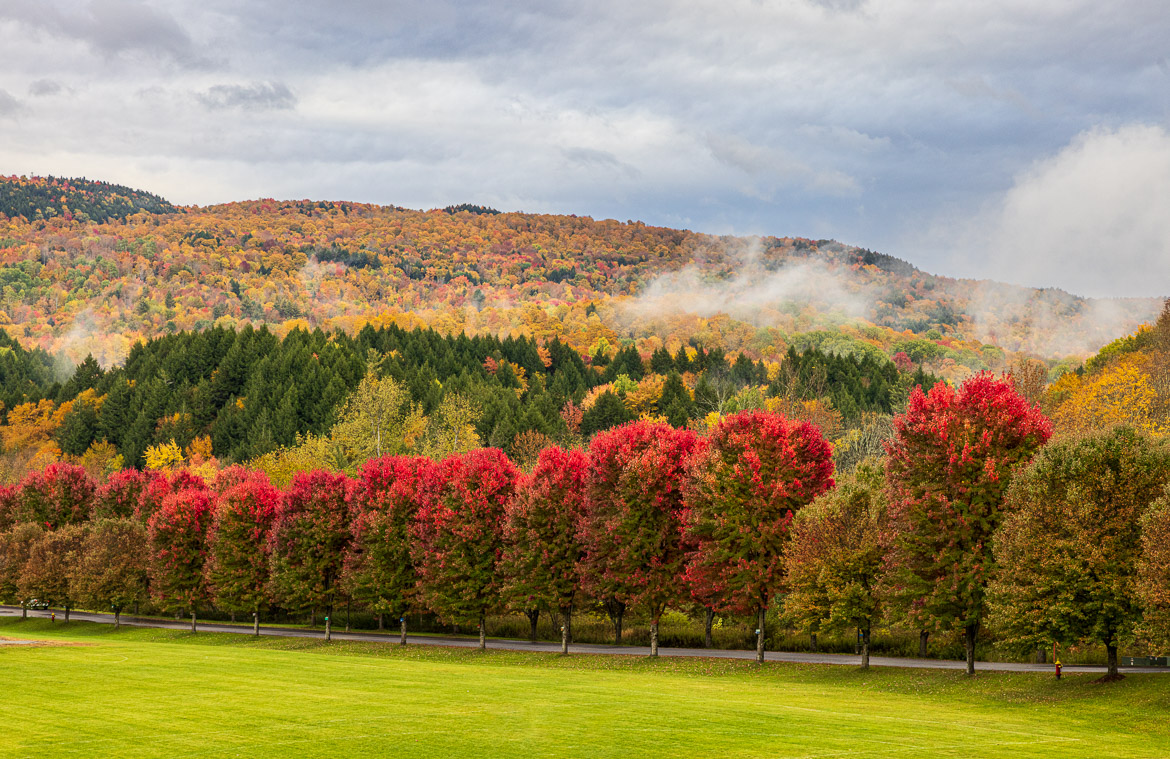
All the colours of the rainbow
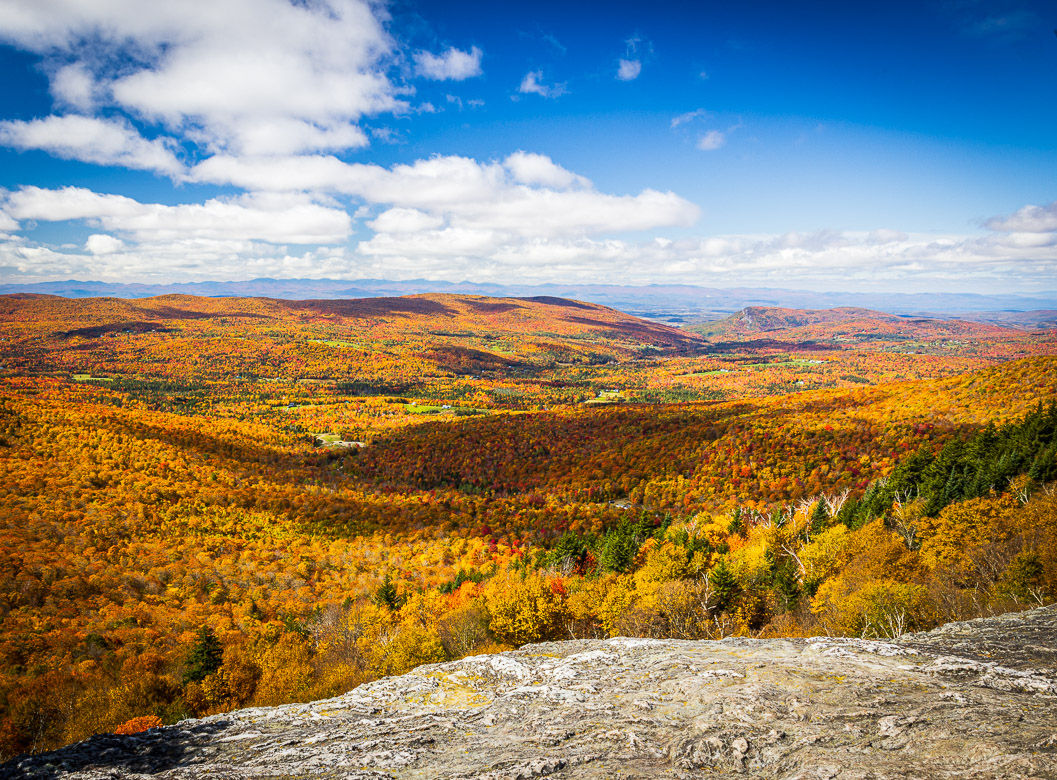
Why are colours turning yellow, orange and red as autumn comes? The yellow colour is there in the leaves all time. it is just that it is masked by the dominant green colour from the chlorophyll. When autumn comes with its cold nights it destroys the chlorophyll in the leaves so the green fades to yellow.
Cold nights destroy the chlorophyll in the leaves so the green fades to yellow. If the temperature stays above freezing the production of anthocyanin is enhanced and the leaves take on a deep red colour. So cold weather but above freezing and also sunny days enhance the spectacle of colours. And we have lots of that in New England. The yellow colour is there in the leaves all time. it is just that it is masked by the dominant green colour from the chlorophyll. When the autumn comes the trees break down the chlorophyll and redistribute the the nutrients they contain to the trunk and root.
The red colour is different. It comes from anthocyanin that is produced in the leaves if it is cold but temperatures stay above freezing. Anthocyanin doesn’t exist in a normal summer leaf, but is produced in the autumn. But why does leaves produce anthocyanin; why do they turn red? I have been looking through the internet and I have seen so many hypothesises but no scientific proof why it happens. And why turn the trees in Europe mainly yellow, whereas the American ones turn red?
You can speculate of this but I think I prefer the Native American folklore explanation: After the hunters killed the Great Bear in the sky, its blood splashed sown and turned the leaves red. And the yellow came from the bear’s fat, splashing out of the pot that it was being cooked in.
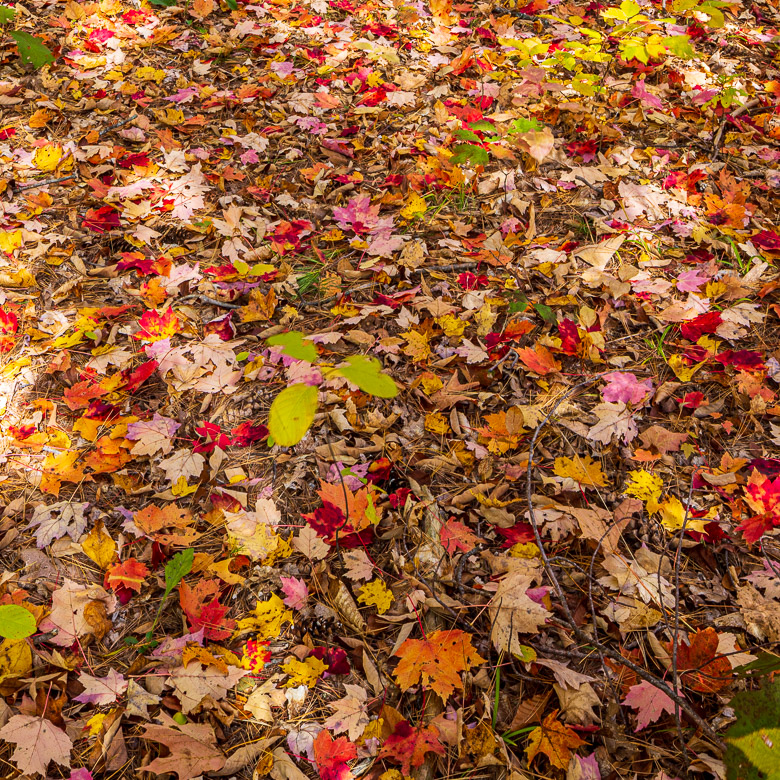
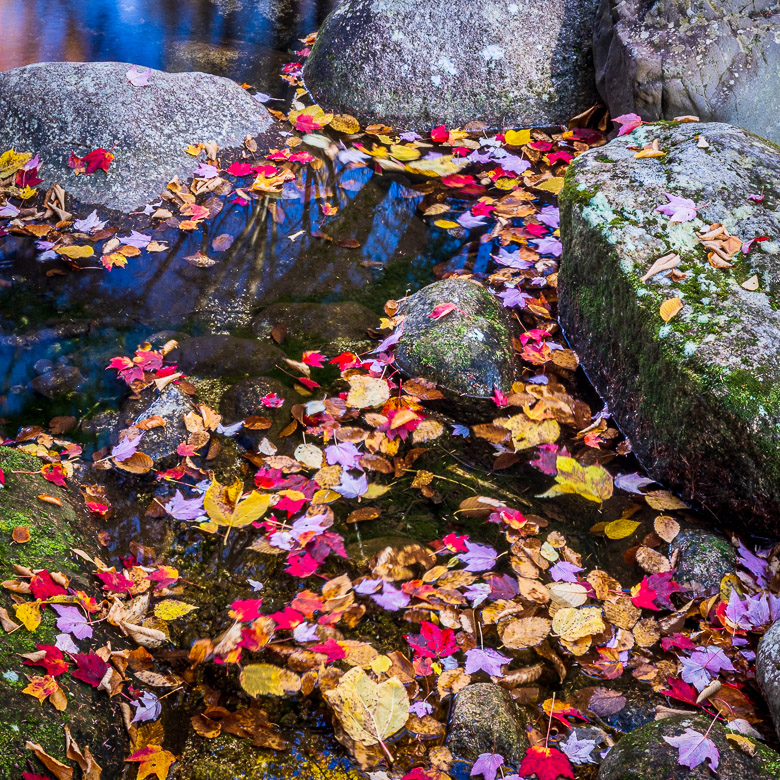
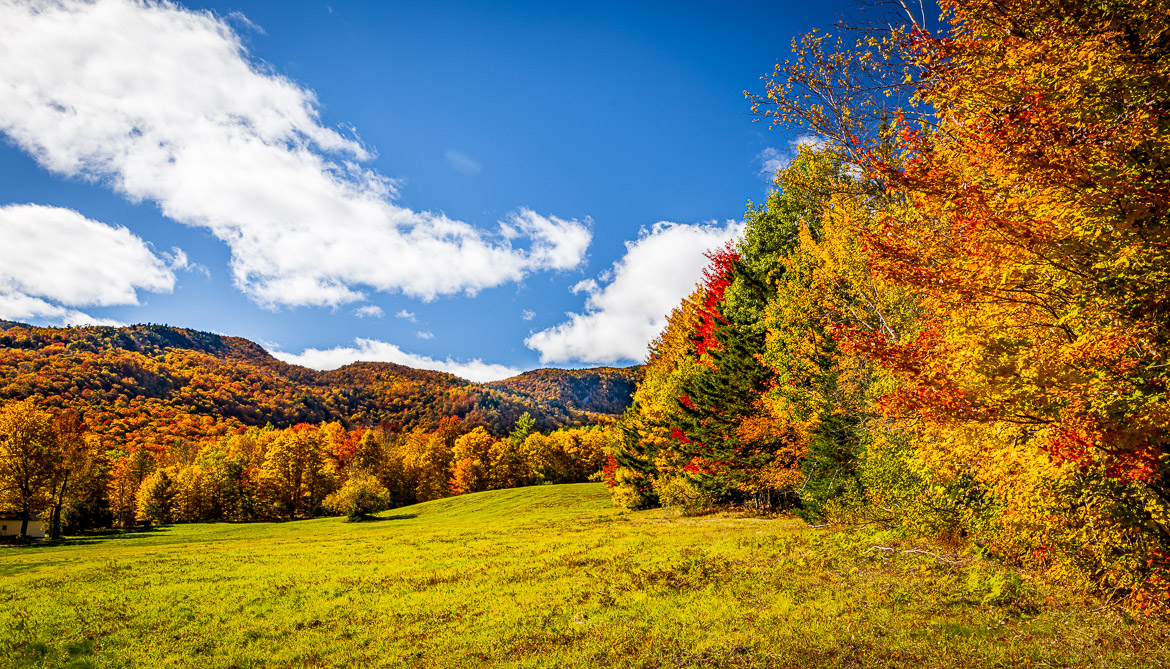
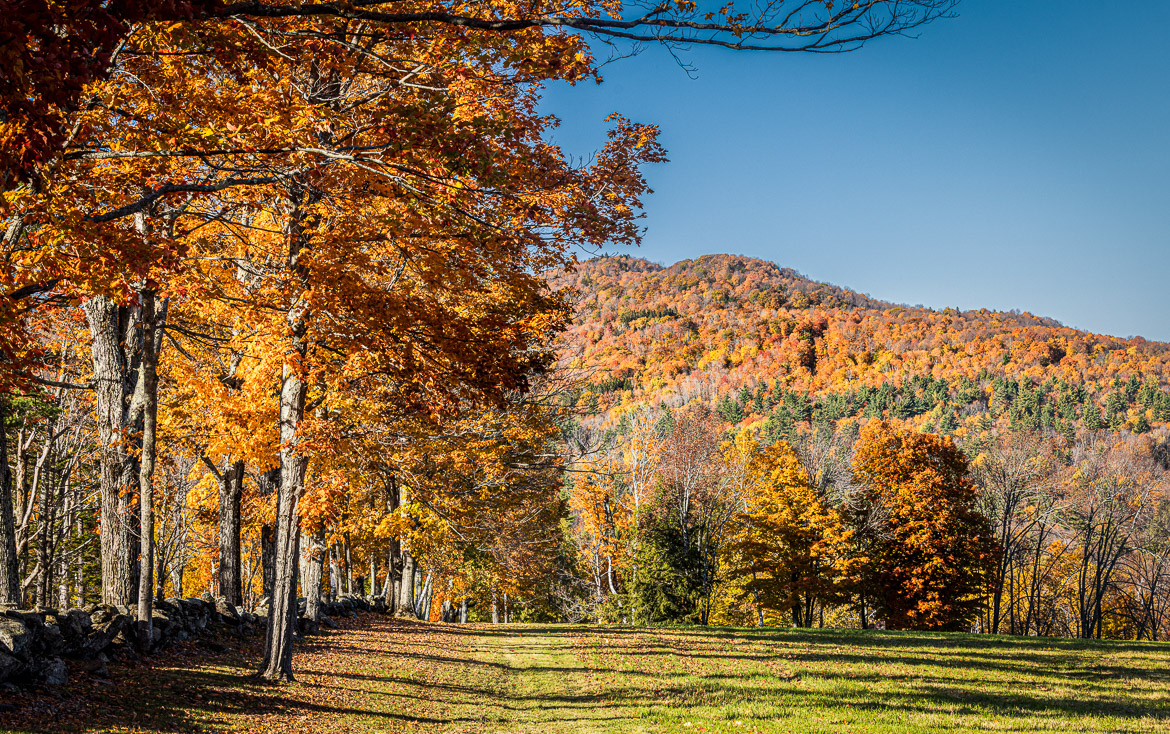
Finale
I have to finish with a sunset. I was driving along the road after I had tried – and failed – to capture a covered bridge because the light wasn’t right, when I suddenly saw the fiery sun shining just above the hills. I hadn’t planned for any sunset photography on this trip to New England, but when the opportunity came along… I stopped – quite naughtily – straight on the little road and rushed out to set up the tripod in front of the car and captured a series of photos just as the sun was setting over the hills.
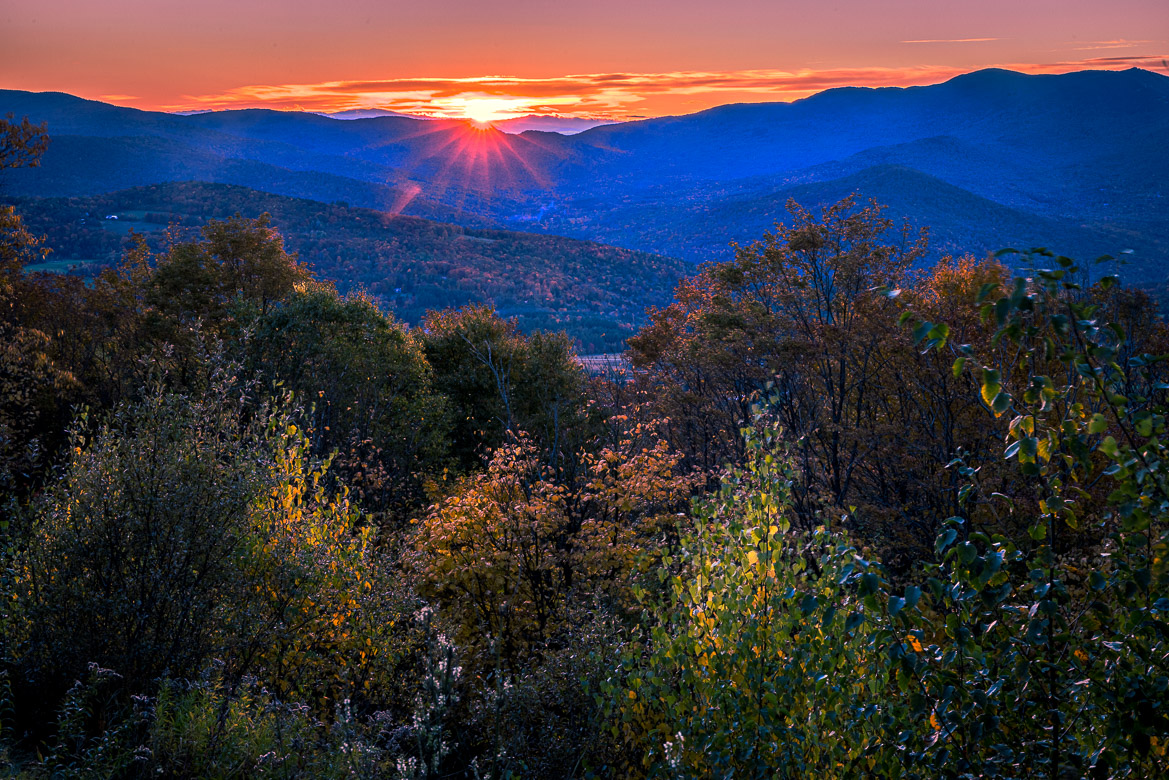
This post will be followed by more stories with different themes in the coming weeks.
